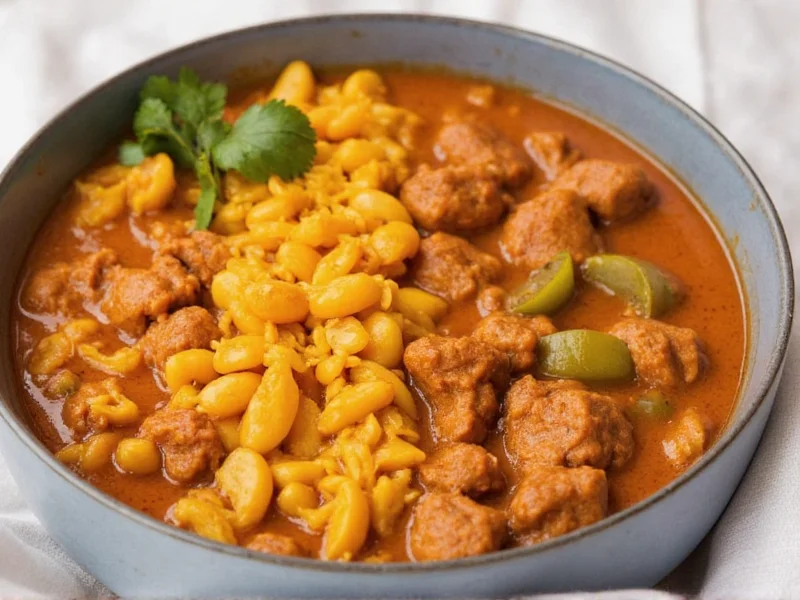When you're in the middle of cooking and realize you're out of curry powder or paste, knowing reliable substitutions can save your meal. Whether you're accommodating dietary restrictions, seeking healthier options, or simply improvising with pantry staples, understanding proper curry alternatives ensures your dishes maintain authentic flavor profiles without compromising quality.
Understanding Curry Types and Their Substitutes
Curry isn't a single ingredient but rather a category of dishes and spice blends that vary significantly across regions. Before selecting a substitute, identify what type of curry you're replacing:
- Curry powder (British-influenced blend)
- Curry paste (Thai-style with fresh ingredients)
- Regional curry blends (Indian, Japanese, or Caribbean variations)
- Finished curry dishes
Each requires different substitution approaches for optimal results in your cooking.
Top Curry Powder Substitutes
When you need a curry powder substitute for chicken, vegetables, or rice dishes, these pantry-friendly options deliver authentic flavor:
| Substitute | Ratio | Best For | Flavor Notes |
|---|---|---|---|
| Homemade blend: turmeric, cumin, coriander, ginger | 3:1:1:1 | General curry dishes | Mildly earthy with warm undertones |
| Garam masala | 1:1 | Indian-inspired recipes | Sweeter, less earthy than curry powder |
| Mustard seeds + fenugreek + chili powder | 2:1:1 | South Indian dishes | Bitter-sweet with noticeable heat |
| Paprika + cumin + coriander + garlic powder | 2:1:1:0.5 | Milder Western dishes | Smoky without intense heat |
Creating Effective Curry Paste Alternatives
When substituting for Thai red or green curry paste, you need both texture and complex flavor. These alternatives work well for curry substitute ingredients in soups, stews, and marinades:
Red Lentil Base
Blend 1/4 cup cooked red lentils with 2 tablespoons coconut milk, 1 teaspoon each of garlic paste and ginger paste, and 1/2 teaspoon chili powder. This creates a thick, nutrient-rich alternative that mimics the texture of curry paste while providing similar umami depth. This healthy curry alternative works particularly well in vegetarian and vegan recipes.
Miso-Lemon Blend
Mix 1 tablespoon white miso paste with 1 teaspoon lemon juice, 1 minced garlic clove, and 1/2 teaspoon each of ground cumin and coriander. The fermented quality of miso replicates the complex fermentation found in traditional curry pastes. This curry flavor without curry powder option adds depth to Japanese-inspired dishes.
Regional Spice Blends as Curry Alternatives
Many global spice blends can serve as effective curry substitutes when you understand their flavor profiles:
- Berbere (Ethiopian) - Use 3/4 teaspoon berbere plus 1/4 teaspoon turmeric for every 1 teaspoon curry powder. Adds heat with complex spice notes.
- Ras el hanout (Moroccan) - Substitute equal parts for curry powder in stews. Offers floral notes with moderate heat.
- Chaat masala (Indian) - Combine 1/2 teaspoon chaat masala with 1/2 teaspoon turmeric for tangy curry alternatives.
- Chinese five-spice - Use 3/4 teaspoon five-spice plus 1/4 teaspoon turmeric for an unexpected but delicious curry powder substitute for chicken dishes.
Dietary-Specific Curry Substitutions
For those with dietary restrictions, these specialized alternatives maintain flavor while accommodating needs:
Gluten-Free Curry Alternatives
Most curry powders are naturally gluten-free, but commercial blends sometimes contain fillers. Create your own blend using pure spices. For curry paste alternatives, ensure coconut milk and other liquid ingredients are certified gluten-free. This gluten-free curry alternative approach works for all dietary needs without compromising flavor.
Vegan Curry Substitutes
Traditional curry dishes often contain fish sauce or shrimp paste. Replace these with:
- 1 teaspoon soy sauce + 1/2 teaspoon lime juice per teaspoon fish sauce
- Mushroom broth for depth in place of shrimp paste
- Tomato paste for umami richness
Common Substitution Mistakes to Avoid
Even experienced cooks make these errors when creating curry alternatives:
- Using only turmeric - Creates yellow color but lacks complexity
- Overcompensating with heat - Curry isn't primarily about spiciness
- Ignoring acid components - Lemon juice or vinegar balances richness
- Not toasting spices - Dry toasting enhances flavor in homemade blends
When adjusting recipes with curry substitutes, start with 75% of the recommended amount, then taste and adjust. Curry flavors develop during cooking, so wait until near the end to make final seasoning decisions. These easy curry substitute ingredients require careful balancing to achieve authentic results.
Creating Your Own Custom Curry Blend
The most versatile approach is creating a personalized curry powder substitute. This homemade curry powder recipe adapts to your taste preferences and available ingredients:
- Dry toast 2 tablespoons coriander seeds, 1 tablespoon cumin seeds, and 1 tablespoon fenugreek seeds
- Grind with 1 tablespoon turmeric, 1 teaspoon ginger, 1/2 teaspoon cardamom, and 1/4 teaspoon cloves
- Add 1/4-1/2 teaspoon cayenne based on desired heat level
- Store in an airtight container for up to 3 months
This base recipe serves as an excellent foundation for curry powder substitute for chicken, vegetables, or legume dishes. Experiment with additional ingredients like smoked paprika for depth or cinnamon for sweetness depending on your recipe requirements.











 浙公网安备
33010002000092号
浙公网安备
33010002000092号 浙B2-20120091-4
浙B2-20120091-4